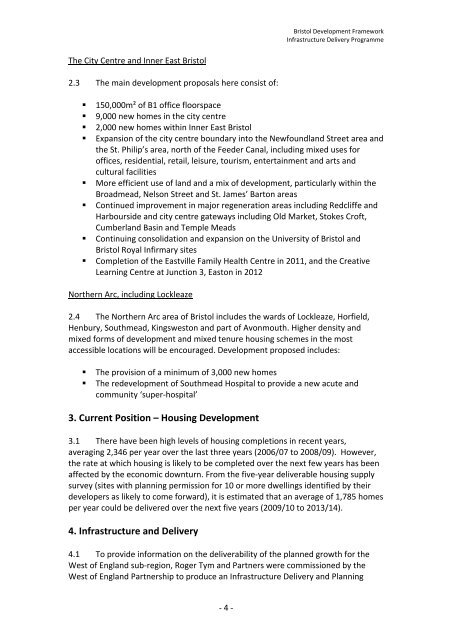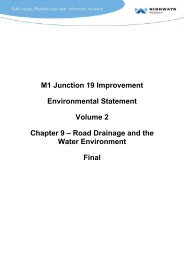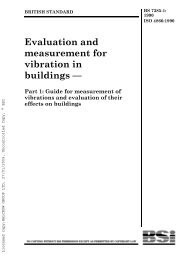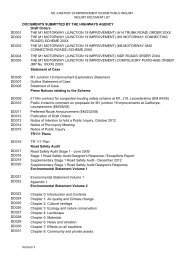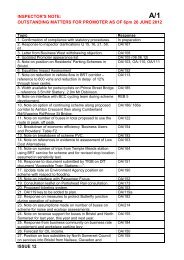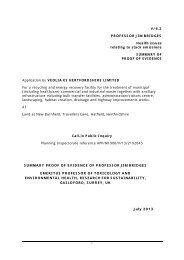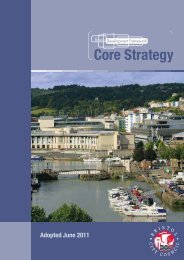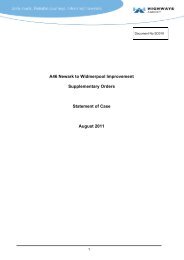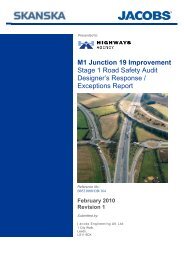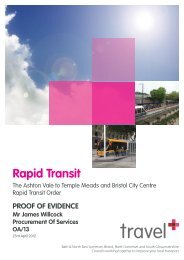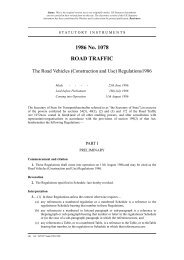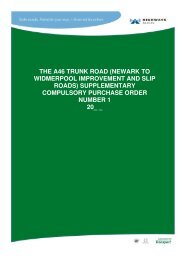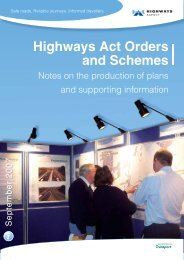Bristol Development Framework Infrastructure Delivery Programme
Bristol Development Framework Infrastructure Delivery Programme
Bristol Development Framework Infrastructure Delivery Programme
You also want an ePaper? Increase the reach of your titles
YUMPU automatically turns print PDFs into web optimized ePapers that Google loves.
<strong>Bristol</strong> <strong>Development</strong> <strong>Framework</strong><br />
<strong>Infrastructure</strong> <strong>Delivery</strong> <strong>Programme</strong><br />
The City Centre and Inner East <strong>Bristol</strong><br />
2.3 The main development proposals here consist of:<br />
• 150,000m² of B1 office floorspace<br />
• 9,000 new homes in the city centre<br />
• 2,000 new homes within Inner East <strong>Bristol</strong><br />
• Expansion of the city centre boundary into the Newfoundland Street area and<br />
the St. Philip’s area, north of the Feeder Canal, including mixed uses for<br />
offices, residential, retail, leisure, tourism, entertainment and arts and<br />
cultural facilities<br />
• More efficient use of land and a mix of development, particularly within the<br />
Broadmead, Nelson Street and St. James’ Barton areas<br />
• Continued improvement in major regeneration areas including Redcliffe and<br />
Harbourside and city centre gateways including Old Market, Stokes Croft,<br />
Cumberland Basin and Temple Meads<br />
• Continuing consolidation and expansion on the University of <strong>Bristol</strong> and<br />
<strong>Bristol</strong> Royal Infirmary sites<br />
• Completion of the Eastville Family Health Centre in 2011, and the Creative<br />
Learning Centre at Junction 3, Easton in 2012<br />
Northern Arc, including Lockleaze<br />
2.4 The Northern Arc area of <strong>Bristol</strong> includes the wards of Lockleaze, Horfield,<br />
Henbury, Southmead, Kingsweston and part of Avonmouth. Higher density and<br />
mixed forms of development and mixed tenure housing schemes in the most<br />
accessible locations will be encouraged. <strong>Development</strong> proposed includes:<br />
• The provision of a minimum of 3,000 new homes<br />
• The redevelopment of Southmead Hospital to provide a new acute and<br />
community ‘super‐hospital’<br />
3. Current Position – Housing <strong>Development</strong><br />
3.1 There have been high levels of housing completions in recent years,<br />
averaging 2,346 per year over the last three years (2006/07 to 2008/09). However,<br />
the rate at which housing is likely to be completed over the next few years has been<br />
affected by the economic downturn. From the five‐year deliverable housing supply<br />
survey (sites with planning permission for 10 or more dwellings identified by their<br />
developers as likely to come forward), it is estimated that an average of 1,785 homes<br />
per year could be delivered over the next five years (2009/10 to 2013/14).<br />
4. <strong>Infrastructure</strong> and <strong>Delivery</strong><br />
4.1 To provide information on the deliverability of the planned growth for the<br />
West of England sub‐region, Roger Tym and Partners were commissioned by the<br />
West of England Partnership to produce an <strong>Infrastructure</strong> <strong>Delivery</strong> and Planning<br />
‐ 4 ‐


